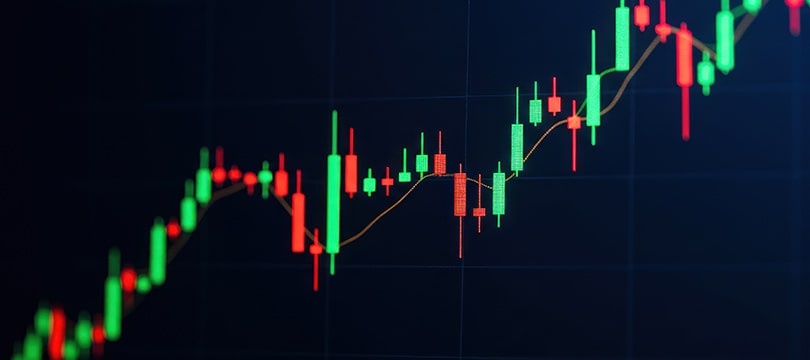Seasonality in Forex is a concept that is often overlooked by novice traders, who are initially focused on understanding technical dynamics and mastering indicators and charts. In reality,
seasonal factors can significantly impact quotes and disprove even the most accurate and orthodox technical analyses. We are dealing with a different field, one that involves not just numbers and formulas, but also extra-market events.
Delving into seasonality in Forex and understanding the seasonal factors that impact quotes means comprehending when
technical analysis risks showing its limitations. It means, above all, intuiting directions and trends. In short, it primarily means defending against turbulence (even if it's "telegraphed") and secondarily exploiting the most interesting movements.
In this brief but exhaustive guide, we discuss Forex seasonality. We provide definitions, illustrate dynamics, and offer advice.
The concept of seasonality in Forex
The concept of seasonality in Forex is simple to understand. Seasonality in Forex can be defined as the set of cyclical factors that impact currency quotes, and they do so according to more or less clear and more or less stable patterns.
However, to understand the real impact of
seasonality, it is necessary to clarify certain
dynamics. These, it must be said, affect all markets but have a particularly strong impact on the currency market.
- Specificity. It is quite rare for factors to impact the entire Forex market, meaning all currency pairs. Generally, we refer to specific factors for this or that currency, or for this and that currency pair. Therefore, it is necessary to study each "pair" individually to understand the seasonal factors that sometimes determine their quotes.
- Transversality. Seasonal factors concern multiple fields and spheres of economic life. The most powerful seasonal factors are monetary policy cycles, which tighten or loosen their grip like a sort of accordion. Other seasonal factors, on the other hand, concern politics. The reference is to national elections, which in Western countries occur every four or five years on average. However, scheduled real economy events, or rather the release of data concerning GDP, inflation, industry, and the labor market, can also be considered seasonal factors.
- Variability. Seasonal factors have a decisive impact and repeat certain patterns. However, these patterns are not eternal. Especially after an economic shock, there may be a change in the way factors affect currencies or the strength with which they do so.
Some examples of seasonal factors
Listing and describing all the
seasonal factors operating in the currency market is a daunting task, if not impossible in a limited space like this. However, we can provide some
examples that concern specific currency pairs and help understand the dynamics that regulate seasonality in Forex.
Seasonal factors of EURUSD
In particular, there are two seasonal factors that impact this currency pair.
- The first manifests at the beginning of the year, when central banks tend to take stock of what was done during the previous year and anticipate what they will do in the year that has just begun. Depending on the direction of the monetary policy cycle, quotes may fall or rise.
- The second seasonal factor manifests in the summer. In Europe and the United States, summer is a period of sluggishness and a break from work (although holiday dynamics vary from country to country). With the reduction in economic activity, there is also a reduction in investment activity. Consequently, volatility tends to decrease, and positions tend to consolidate.
Seasonal factors of USDJPY
In this case, the most important seasonal factor is due to
Japanese fiscal dynamics. The fiscal year in Japan ends in March. As a result, large investors tend to repatriate capital. This causes high demand for the yen and, consequently, a certain appreciation of the dollar.
For the rest, there is a second moment of "glory" for the yen against the dollar (but also against some Western currencies). This moment usually occurs in
August, when economic activities slow down in the Western world, but Japan is experiencing a phase of fullness.
Seasonal factors of AUDUSD
The seasonal factors of AUDUSD largely depend on the demand-supply cycles of commodities. This should not be surprising:
Australia is among the world's largest exporters. In general, the demand for
commodities, especially iron and coal, is strongest in the months preceding winter, so it is precisely at the beginning of autumn that we usually witness a strengthening of the Australian dollar.
Not infrequently,
natural phenomena, which are a recurring and important presence in Australia, can also influence quotes. The reference is particularly to El Nino, which often causes droughts in Australia.
How to approach seasonality correctly
Seasonality in Forex is a double-edged sword for traders. Understanding seasonal factors allows anticipating some
general trends and thus protecting assets from significant fluctuations. The most experienced traders could even exploit these dynamics to their advantage, making winning trades.
However, seasonal factors should be "handled with care." Primarily because they represent patterns, but patterns that are quite
weak and can be further weakened by more or less contingent factors. Therefore, the advice is to take them with a grain of salt, not to consider them as true signals, as a primary source for identifying entry and exit points in the market.
Certainly, they are useful for understanding the dynamics that, beyond the cyclical nature, impact currency pairs.
Finally, there is another aspect to consider. Some seasonal factors are not at all specific but generally concern all pairs. Indeed... All markets. We are talking about
global economic cycles, the succession of expansionary and recessionary periods that have dominated economic activities practically forever. These cycles, however, are generally extremely long and can develop over five, ten, or even twenty years.




